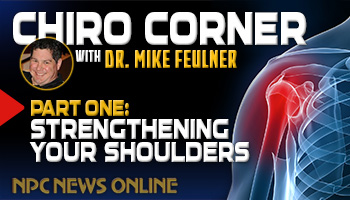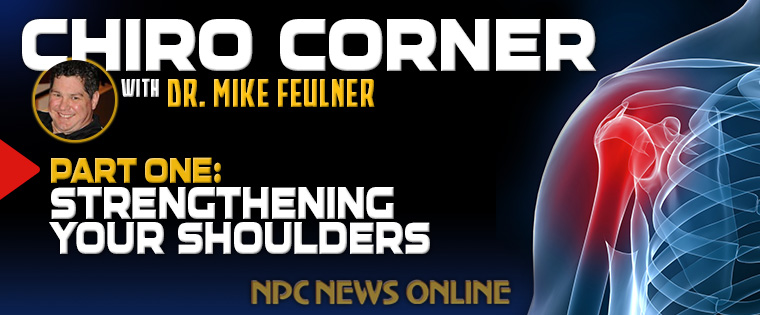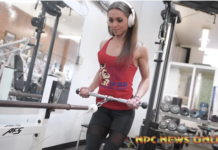By Michael Feulner
When you train as hard as competitors do, injuries are likely to happen at some point in time. When they do occur, the first thing that needs to be determined is the extent of the injury. Will it require time off from training or can we treat the injury while the athlete is still training without causing further damage?
One of the biggest areas of “injury” I have seen recently is the shoulder joint. The majority of these have not been traumatic injuries but chronic in nature – where they have slowly progressed to the point where the amount of pain and lack of range of motion can no longer be ignored. Obviously, injuries of a traumatic nature should be addressed immediately by your orthopedist.
As athletes, we are the kings and queens of ignoring pain and discomfort if it is going to keep us from completing our workouts and derailing our journey to the stage. Unfortunately, while we may be able to ignore the pain, the body can not. That little tweak you felt during a set of shoulder presses could be the humerus riding a little “funny” in the Glenoid fossa, but the body senses this as an unstable situation and looks to stabilize the joint to “prevent” possible further damage. It does this by tightening the muscles (rotator cuff, deltoid, levator scapulae, pec major/minor and latissimus dorsi) thus limiting motion. This situation will worsen until something is done release the soft tissue.
The first thing you’ll need is a thorough exam to determine the extent of the injury. Provided it was not something that needed to be referred out – such as a severe tear, rupture or even a fracture – we would start to address the soft tissue, and then the joint itself. Using certain soft tissue techniques, such as A.R.T. and Rolfing, we would begin to free up the motion of the joint and the adjust it if necessary. We would then develop a rehabilitation program to help strengthen the joint, with the focus on keeping the athlete on schedule with training for their event.
If you are suffering from a shoulder injury, here are some things you can do to help strengthen the joint:
1 Work the joint with little or no weight in the beginning and gradually increasing as pain decreases, through its varied ranges of motion: internal and external rotation, abduction and adduction.
2 Perform pressing movements unilaterally until pain decreases and range of motion increases enough to correctly handle the bar.
3 Stretch between each set to increase range of motion and decrease scar tissue formation.
4 Ice after your workout to decrease inflammation.
The best way to train through an injury, as always, is to take measures to prevent the injury from occurring. Below are some guidelines that will help you avoid these situations.
1 Properly warming up the joints before your workout and implementing fascial stretching between sets will help to not only break up adhesions but help to create greater flexibility.
2 Getting adjusted will help to keep the joints moving properly and should also be a regular part of your program. I often recommend getting adjusted once a week in the beginning. Your frequency can be adjusted to suit your needs. Often, the pain you feel has been lurking below the surface for anywhere from 3-6 weeks before you feel it. Regular adjustments will address this before the problem can manifest itself as pain. The price for an adjustment varies by doctor but $75 is a safe bet and insurance is an option sometimes.
3 As always, proper nutrition and supplementation is paramount in maintaining joint health. Always start with a quality vitamin and mineral supplement and plenty of branched chain and free form amino acids. The list doesn’t end there but it is a great starting point.
4 Make sure your workouts are structured to follow a logical progression. This will help muscle and tendon strength to develop thus providing joint support. Remember, soft tissue connects the joints and provides their support. If the soft tissue is not developed properly the joint can become your “weak link.”
5 Vary your workouts to provide stress from multiple angles. Not only will this help develop the muscle but it will work to strengthen the joints as well.
Michael Feulner earned his Doctorate of Chiropractic from the University of Bridgeport in 2003. A former All-American football player and national-level bodybuilder, he has developed training and nutritional protocols for athletes of all levels. Dr. Feulner serves as the head expeditor at National-level NPC contests and many IFBB Pro League competitions.





